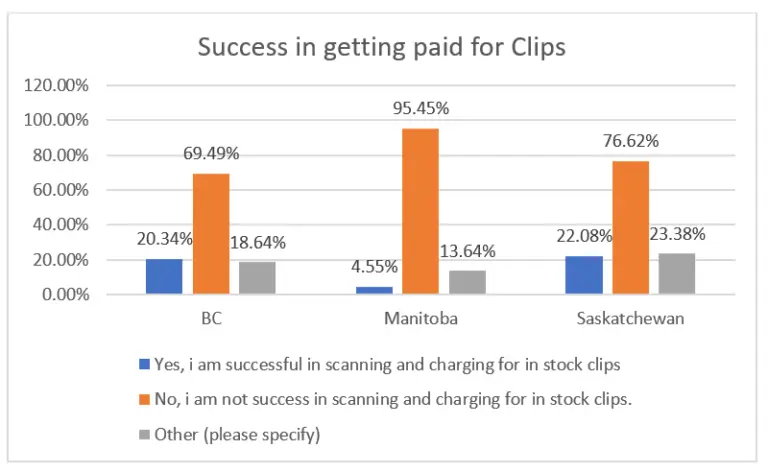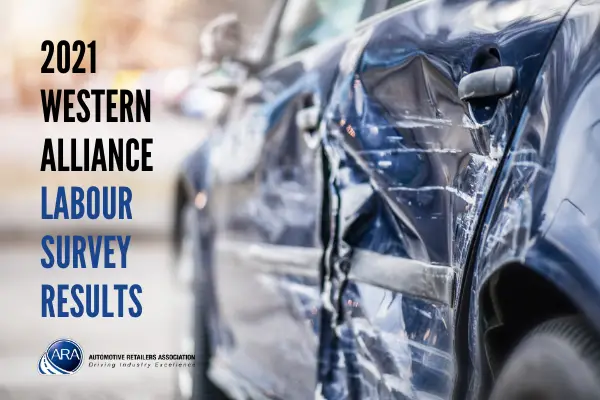The western alliance is a coperative of the automotive industry associations in British Columbia, Manitoba, and Saskatchewan. To learn about, and compare earnings of employees in the collision repair industry, the alliance performed an industry survey in 181 collision repair shops across these three provinces.
The participation rates directly affect the results. The regional responses may not fully reflect the activities of a province but do provide a general view on how the labour force is compensated. Comments attached to this report are general in nature to help provoke thought; the reader is encouraged to draw their own conclusions.
Overall Results
When factoring the higher cost of living, British Columbia is more challenged to provide higher compensation to retain quality staff. This effect is also seen in Manitoba, but to a lesser degree. The higher cost of living erodes net profitability for industry.
It could be stated, “Where insurance door rates are lower, industry uses more of their net profit to carry staff compensation and programs to maintain staff loyalty.”
The following survey results are accompanied by a brief interpretation. Again, the reader is encouraged to draw their own conclusions.
Q1 – Where is your
shop located?
Majority of responses represent urban communities, however there is a significant rural response to allow for a strong cross representation.
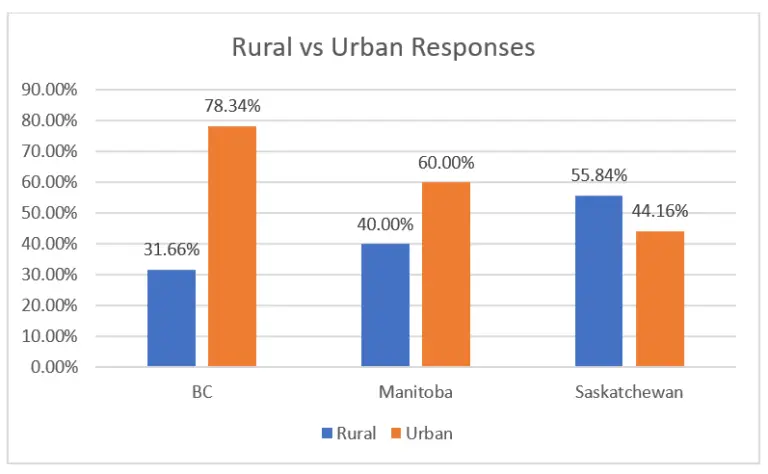
Q2 - How are you paying the majority of your paint technicians?
Differences are evident in how technicians are compensated. Some of this is likely the result of rates applicable in each province and the net impact profit level plays in controlling costs.
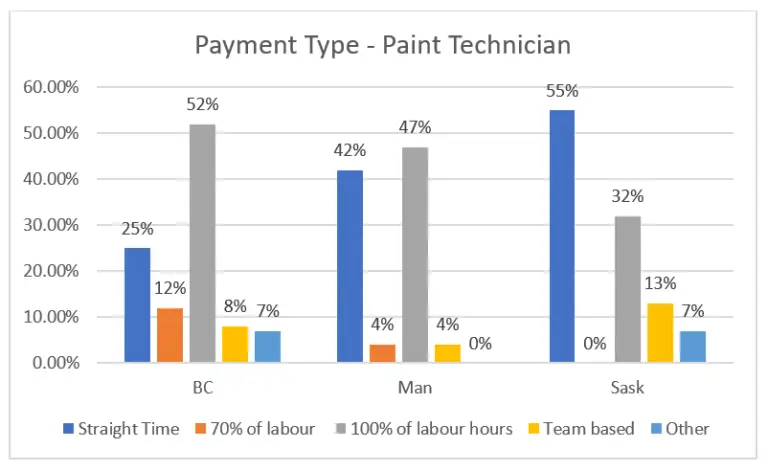
Q3 - What are the ranges in hourly pay for your "journeyman" painters?
Saskatchewan collision repair shops are clearly able to offer a higher wage to painters.
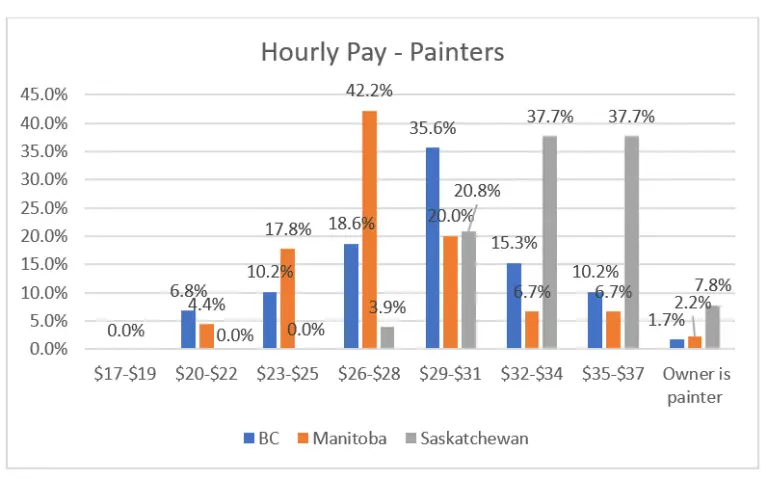
Q4- What are the ranges in hourly pay for your "apprentice" painters?
This chart demonstrates a wide range of salaries. Overall, British Columbia carries a greater tendency to employ apprentice painters.
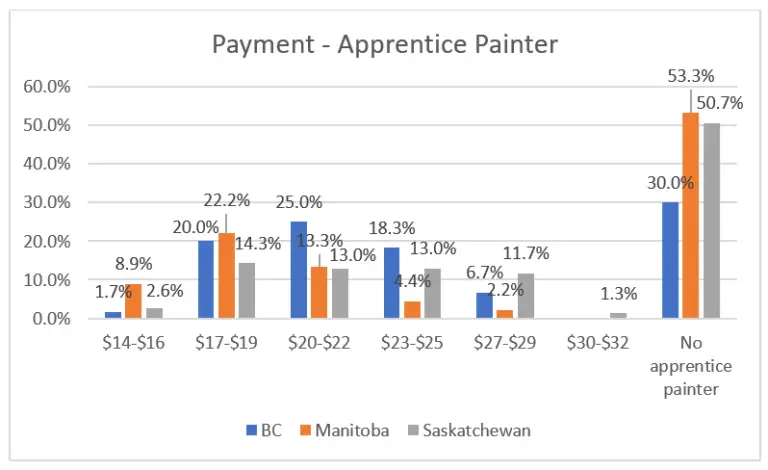
Q5 – What are the ranges in hourly pay for your journeyman "prep" technicians?
The compensation of prep technicians is higher in Saskatchewan. Harmonization will retitle this position to a paint apprentice level 1. The range in salaries likely reflects experience levels.
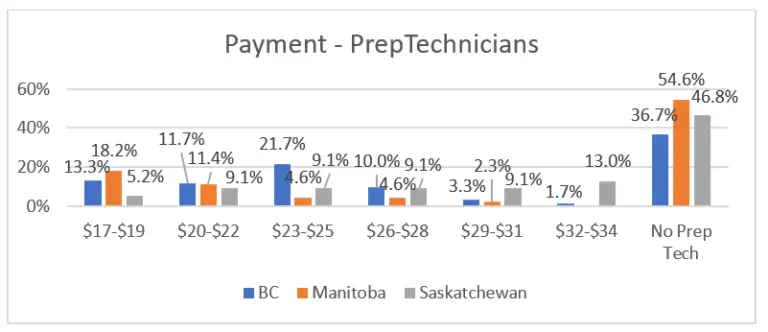
Q6 - Do you offer your paint technicians special "bonus" programs?
The data demonstrates that in British Columbia and Manitoba, where insurance door rates are lower, shops are more challenged to retain staff through the use of incentive programs.
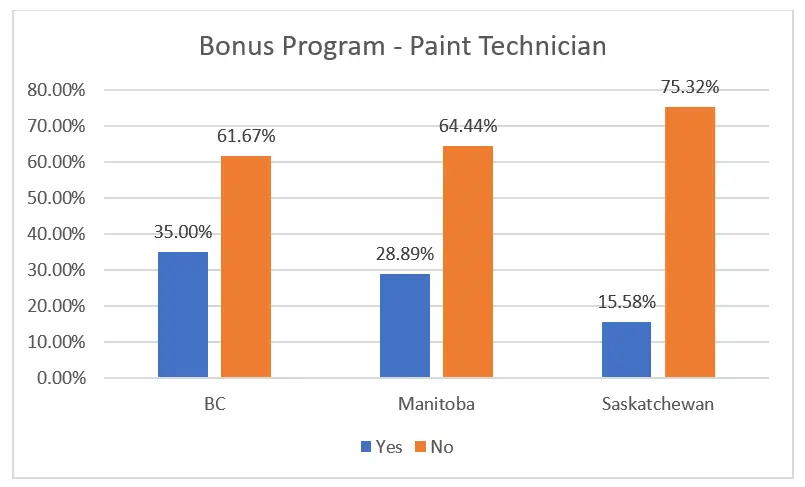
Q7 - How are you paying for the majority of your collision repair technicians?
Manitoba and Saskatchewan split in the use of flat rate and straight time compensations, while British Columbia utilizes flat rate more predominantly. It appears British Columbia is utilizing this compensation mechanism to retain technicians.
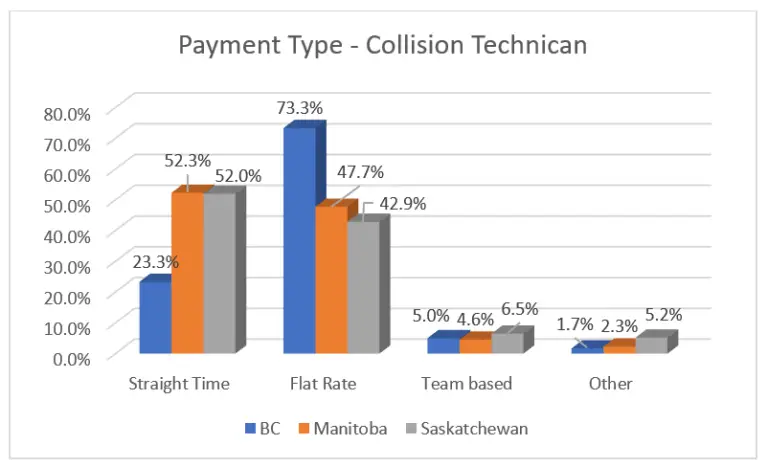
Q8 - Journeyman collision
technician: What range of hourly wages do you pay?
When analyzing the hourly wages, the results are consistent with paint; higher door rates are shared with staff. Where those higher door rates are not in place, the wages are more compressed.

Q9 – Level 1 apprentice
- collision: What range of hourly wages do you pay?
Approximately 2/3 of respondents employ level 1 apprentices. Entry wages in Manitoba appear more tightly controlled.
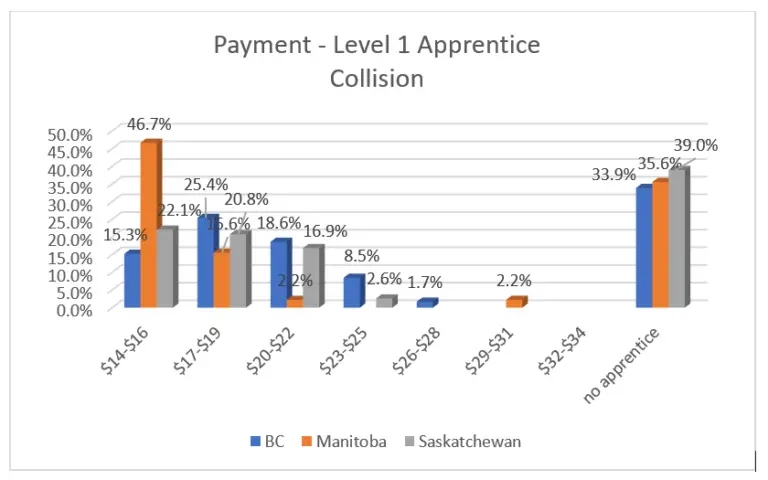
Q10 - Level 2 apprentice
- collision: What range of hourly wages do you pay?
Consistent results.
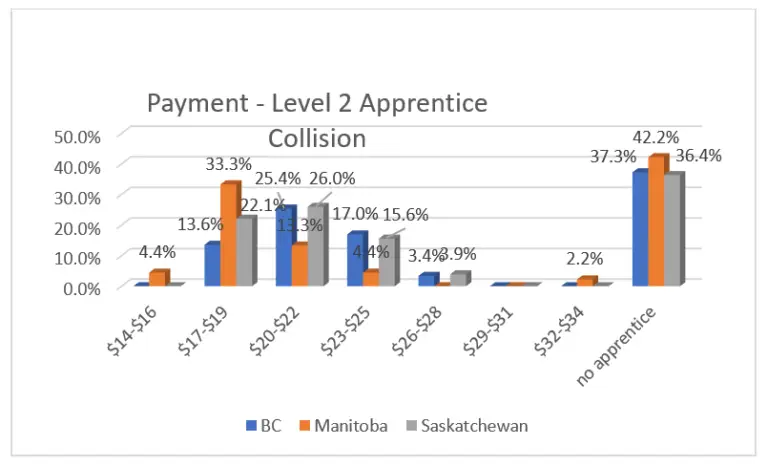
Q11 - Level 3 apprentice
- collision: What range of hourly wages do you pay?
Manitoba appears to have more technicians going through the full apprenticeship cycle than other provinces.
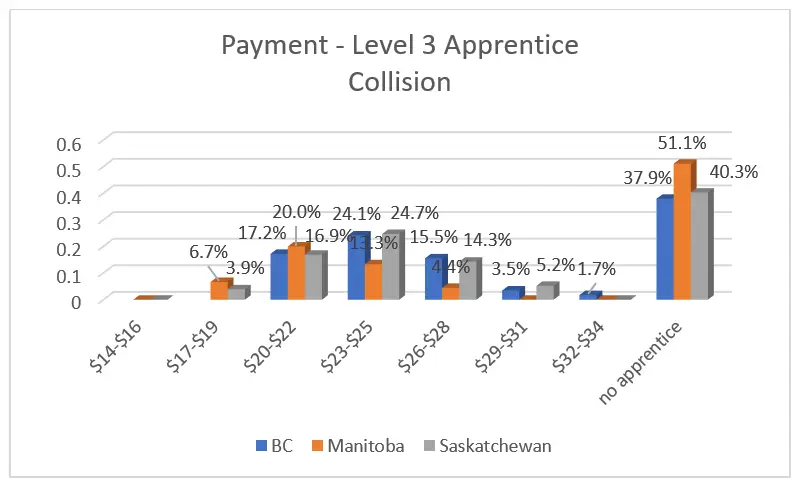
Q12 - Level 4 apprentice
- collision: What range of hourly wages do you pay?
Manitoba appears to have more technicians going through the full apprenticeship cycle than other provinces.
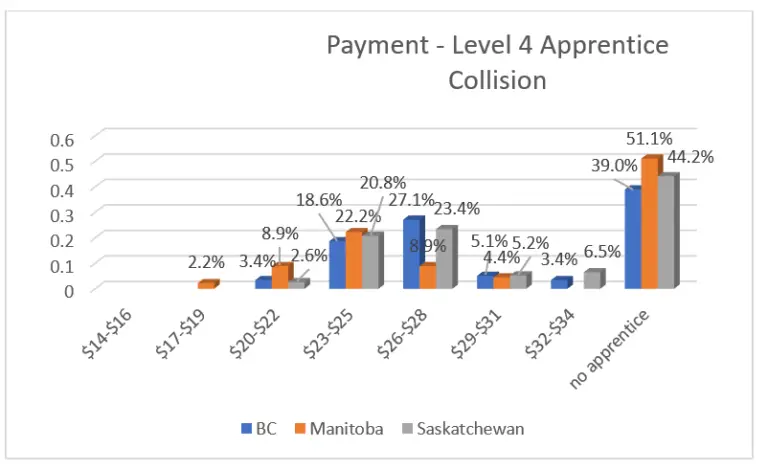
Q13 - Do you offer
your collision technicians special "bonus" programs?
British Columbia shops face bigger pressure to entice
collision technicians through the use of speciality programs where wages are
controlled by minimal door rates and lower net profitability.
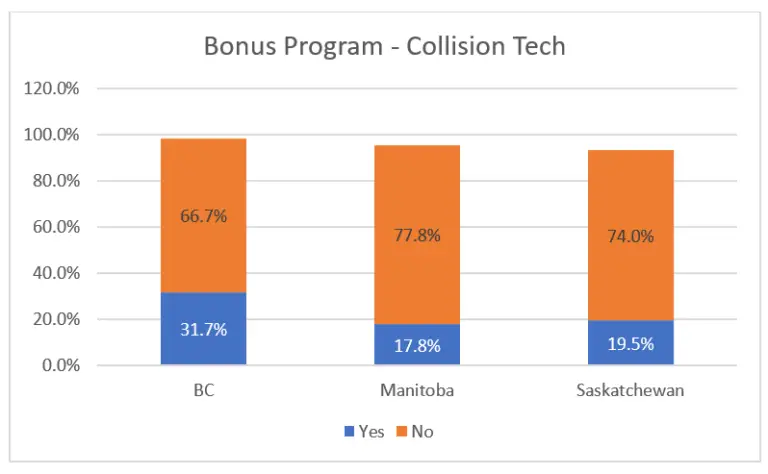
Q14 – Do you pay your
"journeyman" collision estimators a salary or hourly wage?
All three provinces handle collision estimators differently.
Their compensation is salary-based in British Columbia, hourly in Manitoba, and
Saskatchewan tends to utilize fewer dedicated estimators.
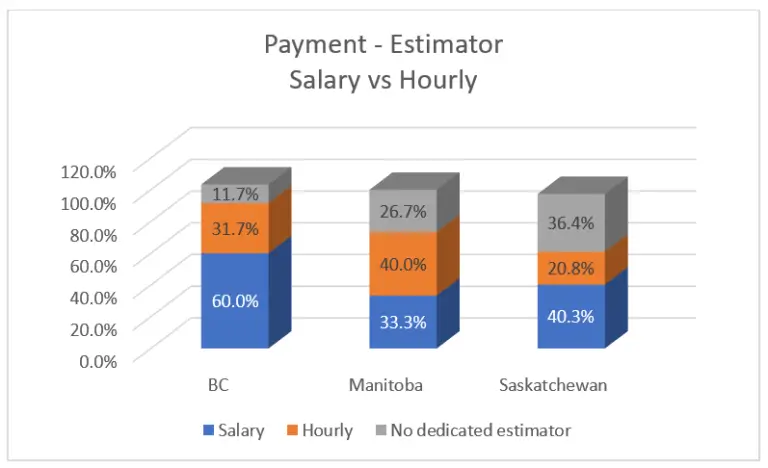
Q15 – What is the
annual salary range you pay your collision estimators?
When a salary is provided to estimators, the salary ranges vary significantly across each province. British Columbia shops appear to pay the highest overall salary for collision estimators.
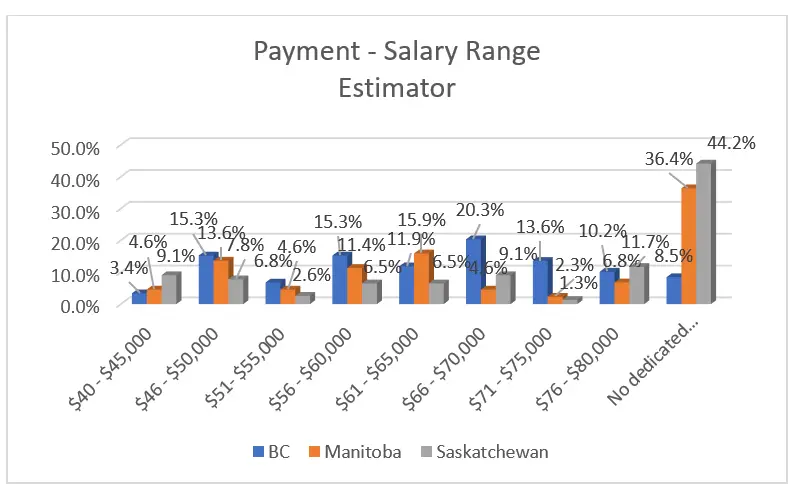
Q16 - Estimator: What
range of hourly wages do you pay?
When an hourly salary is provided to estimators, the salary ranges are more consistent. British Columbia shops appear to pay the highest overall hourly salary for collision estimators.
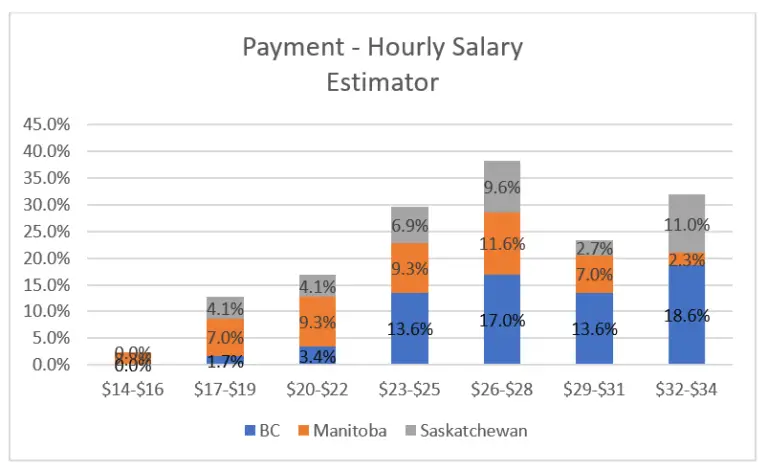
Q17 – Do you offer
your collision estimator(s) special "bonus" programs?
Results again demonstrate that where insurance door rates are lower, the increased pressure results in industry incorporating incentives to retain quality staff.
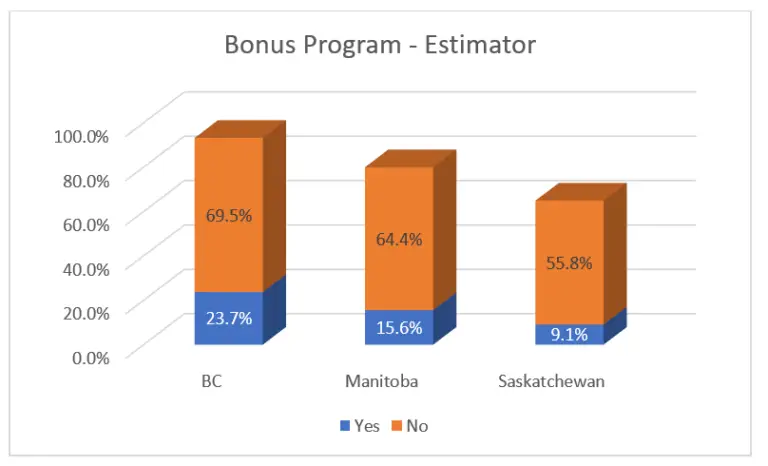
Q18 - Do you offer
special benefit packages to your office staff? (admin/managers)
Manitoba and British Columbia appear to offer more incentives than Saskatchewan. It is assumed that higher insurance door rates allow more direct compensation to keep staff content overall.
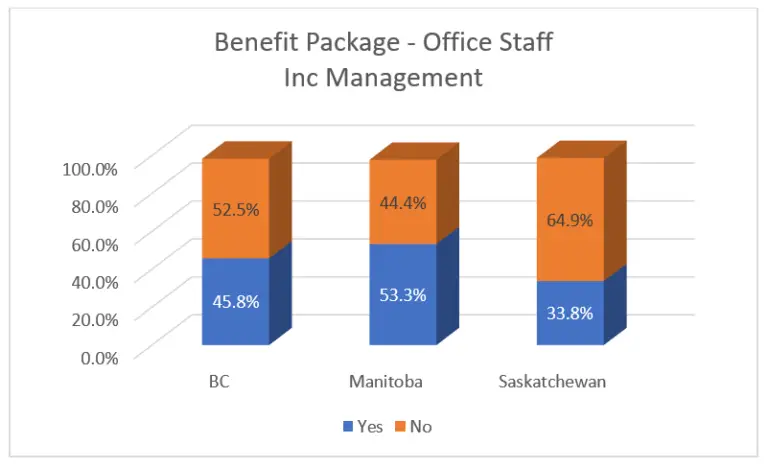
Q19 – Do you offer
"allowances" to customer service representative (CSR) or
technicians?
The survey results suggest that Manitoba and Saskatchewan apply more tool incentives for staff, while British Columbia offers more in technology and transportation.
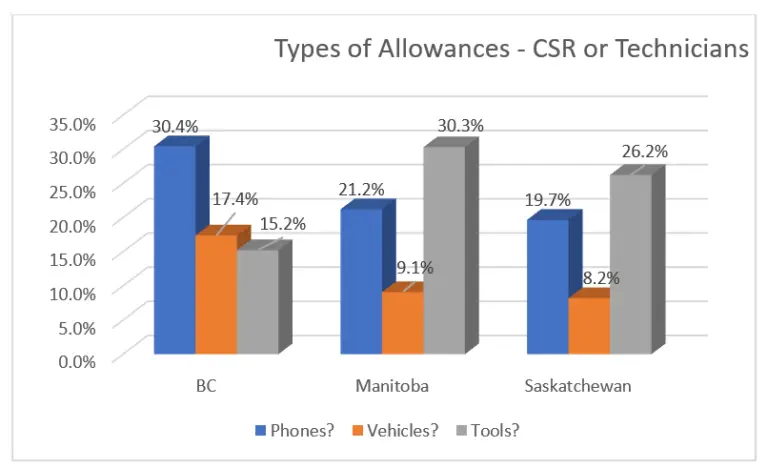
Q20 – Do you have a
"training contract" to ensure staff retention for a period after
investing in staff development?
Responses are fairly consistent but also demonstrates that industry has either not considered, or would like to employ some type of contract to protect their investment in staff training.
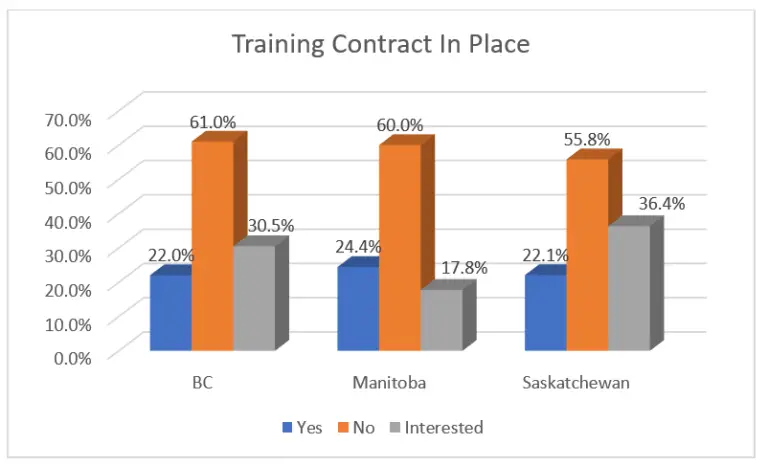
Q21 - Do you provide
your staff with a group benefits package?
Industry is quite consistent in recognizing the value and need for providing benefit packages as a strategy to encourage loyalty and retain staff.
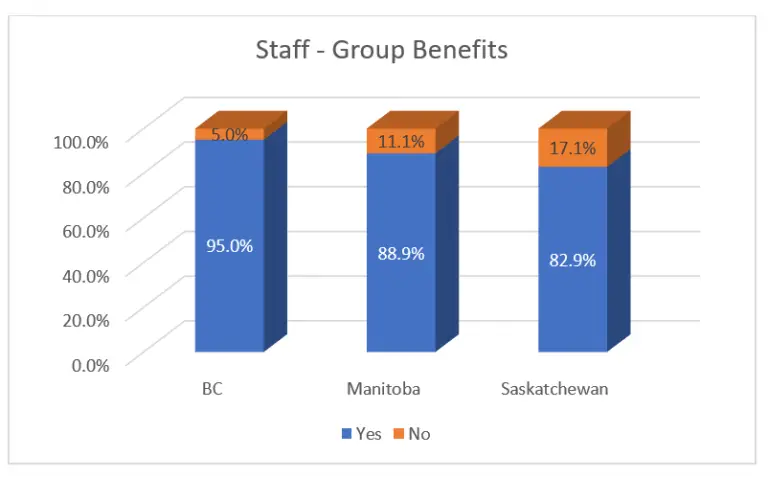
Q22 - If you do
provide staff a group benefits program, please indicate the amount you
contribute on a scale of zero-nothing to 100 percent.
It appears industry is consistent in the amounts they contribute to a group benefits plan.
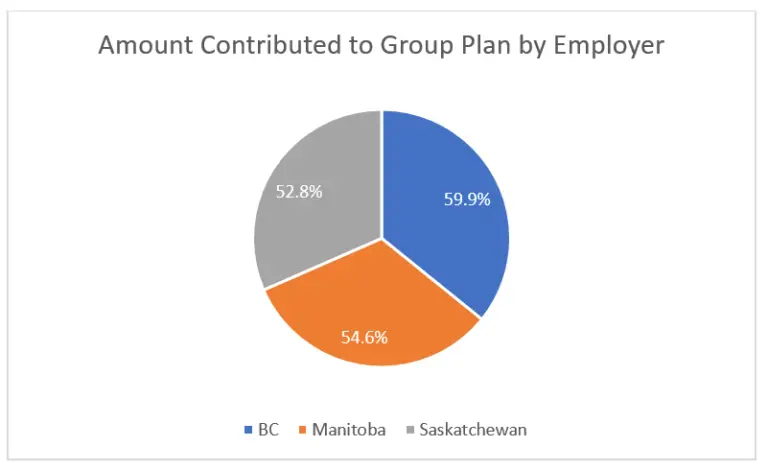
Q23 – What percentage
does this add to your overall staff costs?
The industry contribution has a greater impact in provinces
with lower insurance door rates.
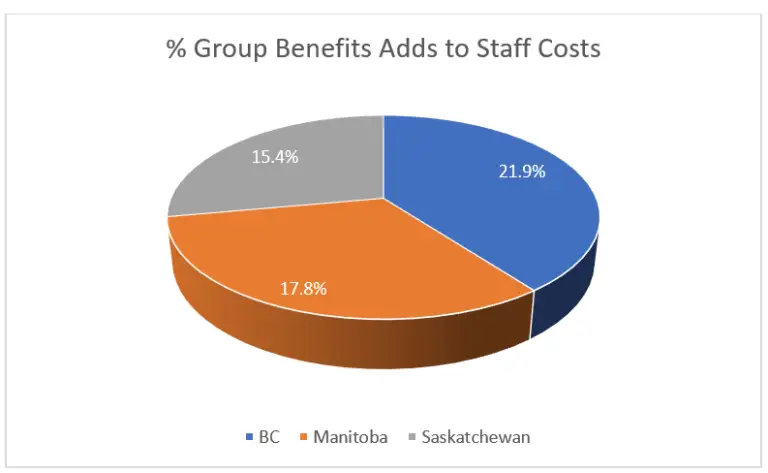
Q24 – Vacation time – data was not usable.
Q25 - Frame repair -
What do you get paid for? - Please indicate which of the following four stages
of frame repair you get paid for.
Based on results, Manitoba has a more precise methodology to obtain payment for all four stages of set-up, measuring, frame pull, and resulting repair. Saskatchewan is well behind others in obtaining payment for 3D measuring.
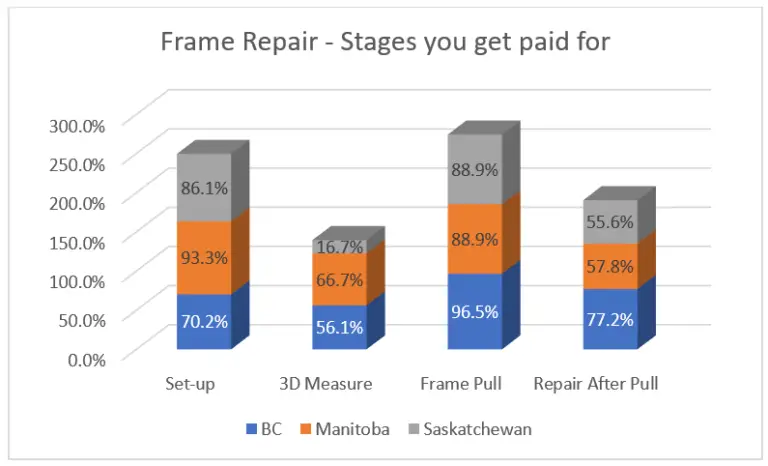
Q26 - Tear-down time
- What do you get paid for?
The results show that industry is not well compensated for the time invested in handling total loss estimates on behalf of insurers. The problem appears even more dramatic in British Columbia, where industry has half the success than others in being compensated.

Q27 – Clips - Are you
successfully charging for in stock clips?
Results show that Manitoba is less successful in charging for clips.
